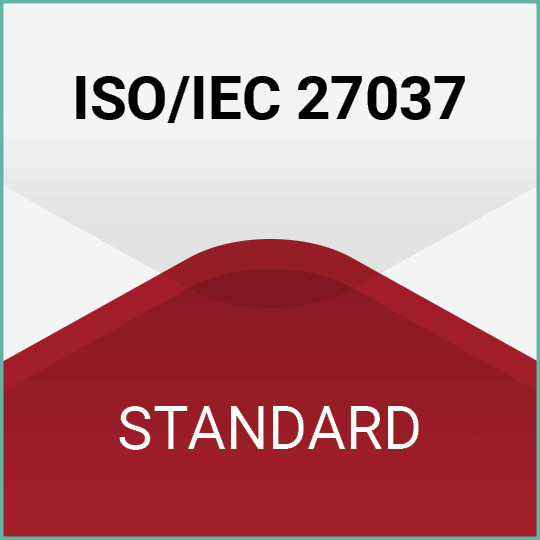Digital Forensic Investigation for Non-Volatile Memory Architecture by Hybrid Evaluation Based on ISO/IEC 27037:2012 and NIST SP800-86 Framework
DOI:
https://doi.org/10.25299/itjrd.2022.8968Keywords:
Digital forensic \ Non-volatile \ Investigation \ ISO/IEC 27037:2012 \NIST SP800-86Abstract
In the implementation of Digital Forensics, one of the derivatives of practice is the handling of Digital Evidence. Handling Digital Evidence requires important steps and procedures. Digital evidence is a source of artifacts in handling a digital-based crime case, one of which comes from digital storage. In this research, the author will design a framework for Digital Forensic investigations by simulating digital evidence in the form of a non-volatile architecture. The reference commonly used by researchers in previous articles is the National Institute of Justice (NIST). The framework is a reference and steps in the practice of acquiring digital evidence. The purpose of designing this framework is as a legal procedure that is specifically implemented in the practice of acquiring non-volatile digital evidence. In the design, the author conducted a literature study on the NIST SP 800-86 and ISO 27037:2012 standards and then combined them in a hybrid terminology. The output of this research is to combine the two standards to become framework as reference for handling and investigating Digital Forensic science.
Downloads
References
D. Hariyadi, A. A. Huda, A. Priadana et al., “Laron v2: Pengembangan aplikasi forensik logikal untuk mengakusisi percakapan whatsapp di android,” SMARTICS Journal, vol. 7, no. 1, pp. 7–13, 2020.
S. Dogan and E. Akbal, “Analysis of mobile phones in digital forensics,” in 2017 40th international convention on information and communication technology, electronics and microelectronics (MIPRO). IEEE, 2017, pp. 1241–1244.
M. N. Al-Azhar, “Digital forensic: Panduan praktis investigasi komputer,” Jakarta: Salemba Infotek, 2012.
D. Hariyadi, “Komparasi penanganan barang bukti elektronik dan/atau barang bukti digital sesuai sop pusat laboratorium forensik polisi republik indonesia,” 2014.
R. A. Ramadhan, Y. Prayudi, and B. Sugiantoro, “Implementasi dan analisis forensika digital pada fitur trim solid state drive.”
K. Kent, S. Chevalier, T. Grance, and H. Dang, “Sp 800-86. guide to integrating forensic techniques into incident response,” 2006.
D. Sudyana, Y. Prayudi, and B. Sugiantoro, “Analysis and evaluation digital forensic investigation framework using iso 27037: 2012,” International Journal of Cyber-Security and Digital Forensics (IJCSDF), vol. 8, no. 1, pp. 1–14, 2019.
M. Rafique and M. Khan, “Exploring static and live digital forensics: Methods, practices and tools,” International Journal of Scientific & Engineering Research, vol. 4, no. 10, pp. 1048–1056, 2013.
A. Aljaedi, D. Lindskog, P. Zavarsky, R. Ruhl, and F. Almari, “Comparative analysis of volatile memory forensics: live response vs. memory imaging,” in 2011 IEEE Third International Conference on Privacy, Security, Risk and Trust and 2011 IEEE Third International Conference on Social Computing. IEEE, 2011, pp. 1253–1258.
B. Raj and R. Hubbard, “Forensics analysis of solid state drive (ssd),” in Proc. 2016 Univers. Technol. Manag. Conf, 2016, pp. 1–11.
R. A. Ramadhan and D. Mualfah, “Implementasi metode national institute of justice (nij) pada fitur trim solid state drive (ssd) dengan objek eksperimental sistem operasi windows, linux dan macintosh,” IT Journal Research and Development, vol. 5, no. 2, pp. 183–192, 2020.
F. Adelstein, “Live forensics: diagnosing your system without killing it first,” Communications of the ACM, vol. 49, no. 2, pp. 63–66, 2006.
M. M. Pollitt, “The digital crime scene,” in Handbook of Digital and Multimedia Forensic Evidence. Springer, 2008, pp. 65–76.

Downloads
Published
How to Cite
Issue
Section
License
This is an open access journal which means that all content is freely available without charge to the user or his/her institution. The copyright in the text of individual articles (including research articles, opinion articles, and abstracts) is the property of their respective authors, subject to a Creative Commons CC-BY-SA licence granted to all others. ITJRD allows the author(s) to hold the copyright without restrictions and allows the author to retain publishing rights without restrictions.















